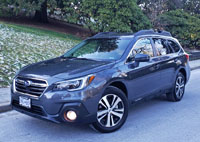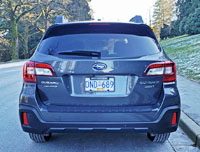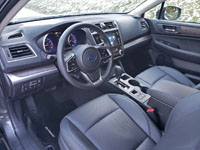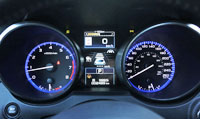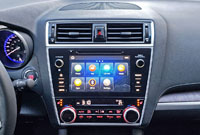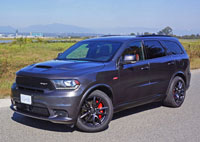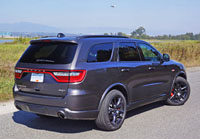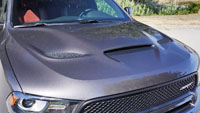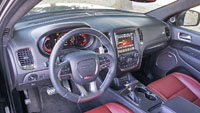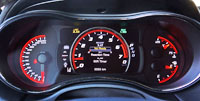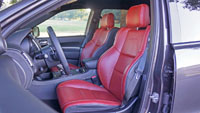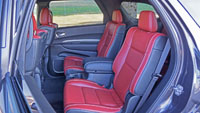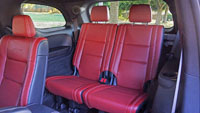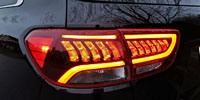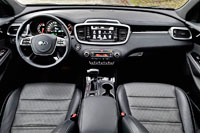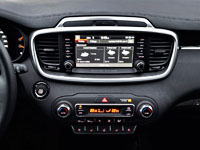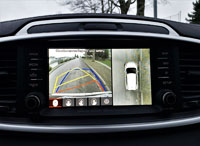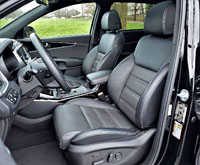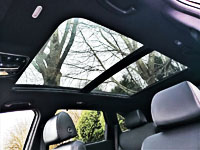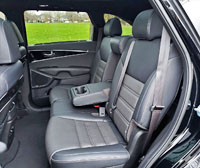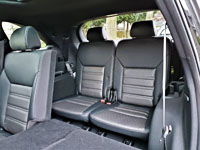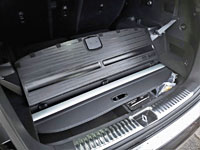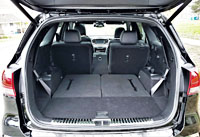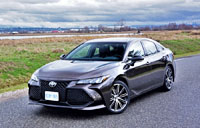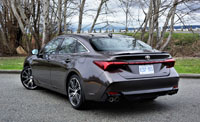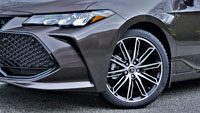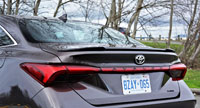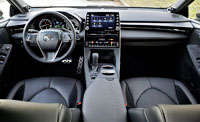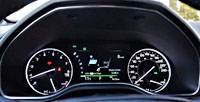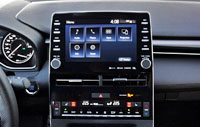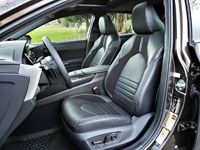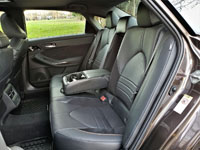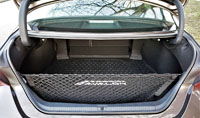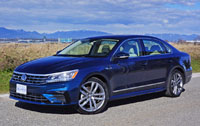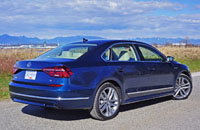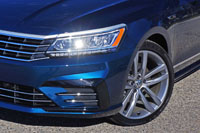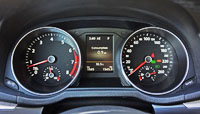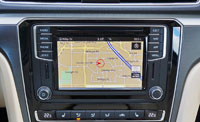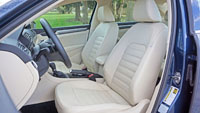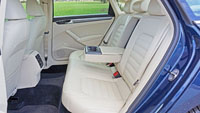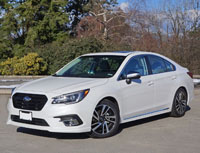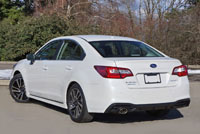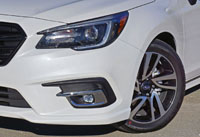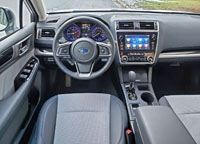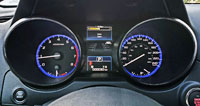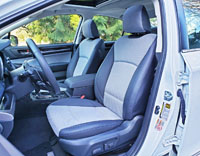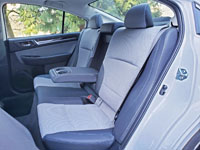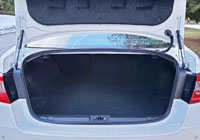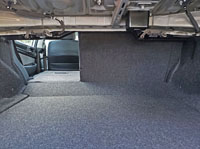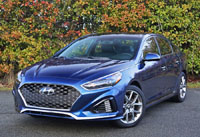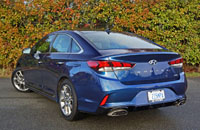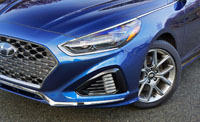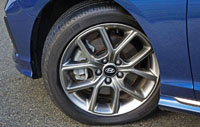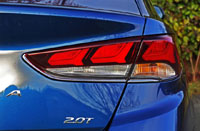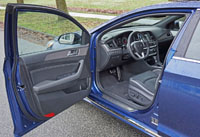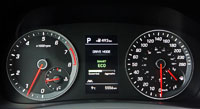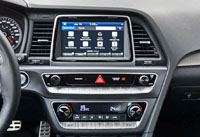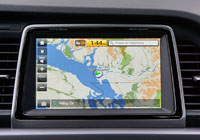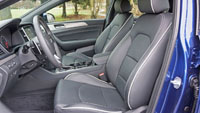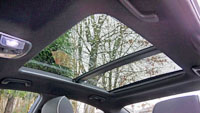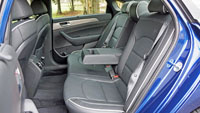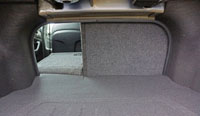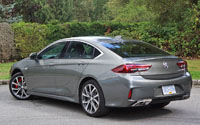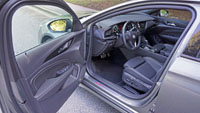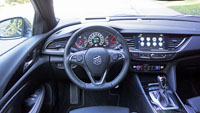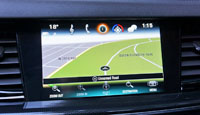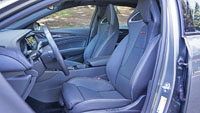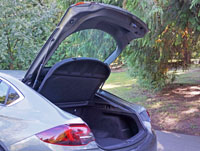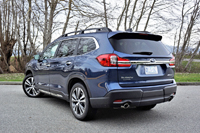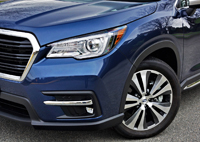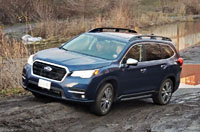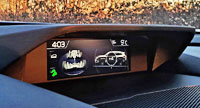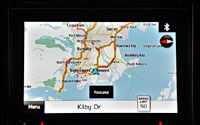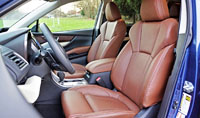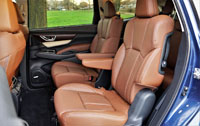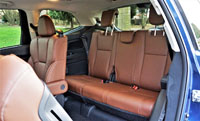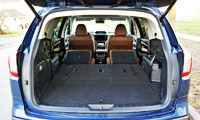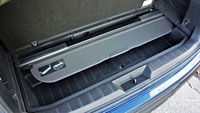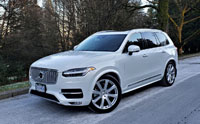
Even though the Volvo XC90 is deep into its fourth model year, you’ll have trouble finding a more impressively detailed or more opulently appointed mid-size luxury crossover SUV. The big three-row Swede is impeccably finished, especially when upgraded to its most luxurious Inscription trim line, which is just the way it was most recently presented to me.
This was the fourth second-generation XC90 I’ve tested, and the second Inscription model, the other two in sportier R-Design trim. Of these, two were equipped with the 316 horsepower mid-range powertrain and the other two matched up with the considerably more motivating 400 horsepower plug-in hybrid configuration. This said, I hadn’t driven the less potent drivetrain since 2016, when this model was completely overhauled with an all-new LED headlight-infused, ultra-clean design language plus a level of bejeweled luxury Volvo had never ventured into. The result was an automaker pulled back from near death (before its August, 2010 takeover by Hangzhou, Zhejiang, China-based Zhejiang Geely Holding Group), to one of relative financial health.
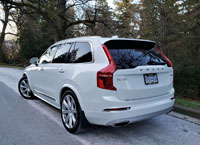
Volvo’s Canadian sales more than doubled in the final quarter of 2015 when the 2016 XC90 arrived, from 10,964 vehicles during October, November and December 2014 to 22,507 cars and SUVs in Q4 of 2015, while the XC90’s deliveries jumped from 427 examples in calendar year 2014 to a total of 957 throughout 2015 and a phenomenal 2,951 in 2016. Amazingly, after a slight pullback in 2017 the growth continued with 3,059 XC90 sales in calendar year 2018, making the brand’s largest vehicle its most popular last year.
Interestingly, the new second-gen XC90 has found more Canadian luxury buyers each year than the XC60, and yes I’m talking about the totally new, wholly redesigned second-generation XC60 that went into production in March of 2017. The smaller five-passenger compact luxury SUV had consistently outsold Volvo’s much bigger three-row mid-size crossover before both models’ remakes, which is in-line with what most brands experience due to the affordability of the smaller SUVs.
The phenomenon is made even more unusual when factoring in that the new XC60 comes closer to matching the XC90’s high-level materials quality, overall refinement, superb digital interfaces, and varied choice of powertrains than any competitive brand, and that opting for the lesser model would actually leave about $13k in the pockets of would-be purchasers at the lowest end of both cars’ trim lines, and nearly $12k for top-tier Inscription T8 eAWD Plug-In Hybrid models.

Why would this occur? Volvo knows its customers better than I, and their marketing department hasn’t shared anything specific to this issue, but it seems as if its Canadian base prefers larger, more substantive, pricier vehicles, which should certainly have everyone at the company’s Richmond Hill, Ontario headquarters smiling, not to mention its growing retailer base.
While not the largest in its segment, the XC90 is clearly a mid-size three-row luxury crossover SUV. It measures 4,950 mm (194.9 inches) from nose to tail, with a 2,984-mm (117.5-inch) wheelbase, plus it’s 2,140 mm (84.3 inches) from side-to-side, including its exterior mirrors, while it’s 1,775 mm (69.9 inches) from the base of its tires to the top of its roof rails. It also provides a sizeable 237 mm (9.3 inches) of ground clearance, which certainly doesn’t hurt when trudging through deep snow.

The XC90’s generous dimensions make it more than just roomy inside. I first learned this when climbing inside the 2016 Volvo XC90 T6 AWD R-Design noted earlier, and confirmed it fully during a road trip in the 2017 XC90 T8 Twin Engine eAWD Inscription. My partner and I left Vancouver, drove up, over and down the Coquihalla Highway, and then up, over and down the 97C connector to Kelowna, BC during a wonderfully warm autumn in 2016, and while only two of us enjoyed this weekend getaway we carried a reasonable amount of cargo (including late season Okanagan fruit, preserves and wine) in the XC90’s 1,183-litre (41.8 cubic-foot) cargo hold, the volume available after dropping the third row into the floor.
If I owned an XC90 (or any three-row SUV) this is how I’d leave the seats set up most of the time, as the kids are now grown and have no need the third row. Yes it would be a shame to waste those nicely shaped individual bucket seats, each of which can easily accommodate my five-foot-eight, medium-build frame quite comfortably, making me wish Volvo configured it as a less expensive two-row model with additional under-floor storage, but no such luck.

As it is, the XC90 gets a decently sized 447-litre (15.8 cubic-foot) dedicated cargo hold aft of the third row, which expands to 2,427 litres (85.6 cubic feet) when both rear rows are laid flat. Even better, its second row can be folded in thirds so rear passengers can enjoy the more comfortable, optionally heated window seats while skis or other types of long items are loaded in between. I wish Volvo had added a pass-through for the third row as well, but that’s probably asking too much. As it is, the XC90 is one of the more flexible luxury SUVs from a passenger/cargo perspective.
As it has throughout its four-year tenure, the 2019 XC90 can be had in Momentum, R-Design and Inscription trims, the base model starting at $59,750 (plus freight and fees), the mid-range model beginning at $69,800, and top-line available from $71,450. Speaking of threes, this model also lets you choose from all of the brand’s 2.0-litre, four-cylinder power units, starting with the T5 AWD that’s only available in Momentum trim and simply uses a turbocharger to produce 250 horsepower and 258 lb-ft of torque. Above this is the T6 AWD in my tester that adds a supercharger to the mix for a total of 316 horsepower and 295 lb-ft of torque, while at the top of the Volvo heap is the T8 eAWD “Twin Engine” hybrid system that combines a 60-kW electric motor and externally charge-able plug-in battery for a maximum of 400 net horsepower and 472 net lb-ft of torque.

As for pricing, moving up to the T6 in Momentum trim will add $4,250 to the bottom line, while the Momentum T8 adds another $10,950. Alternatively you’ll be charged $12,650 in either R-Design or Inscription trims when moving from T6 to T8 power units, although take note you can save up to $5,000 in additional 2019 XC90 incentives right now by visiting the 2019 Volvo XC90 Canada Prices page right here at CarCostCanada, where you’ll also be able to get all the pricing details about trims, packages and individual options, plus manufacturer rebate information and otherwise difficult to find dealer invoice prices.
Along with standard all-wheel drive (as noted by all the “AWD” designations in the trim names), each XC90 powertrain comes mated up to an efficient eight-speed Geartronic automatic transmission with auto start/stop that automatically shuts the engine off when it would otherwise be idling, and restarts it when lifting your foot from the brake pedal. Obviously that autobox is set up differently in conventionally powered models to the hybrid, but the driveline is even more unique in when factoring in eAWD, which leaves the internal combustion engine to power the front wheels and aforementioned electric motor to rotate those in back.

Unlike early hybrid systems, the XC90’s T8 powertrain can also be driven solely on electric power at regular speeds, although with about 30 kilometres of EV range available you’ll probably need to rely on its gasoline-fed engine for supplemental energy when the battery drains, unless your commutes and/or errand runs cover short distances with as little highway driving as possible. Nevertheless, if you manage to keep your enthusiasm bridled and not dig into all of its 400 horsepower, the XC90 T8’s claimed 10.1 L/100km city, 8.8 highway and 9.5 fuel economy rating makes it one of the thriftiest SUVs in its class. Alternatively, the conventionally powered T5 and T6 powertrains are good for 11.3 L/100km in the city, 8.5 on the highway and 10.0 combined for the former and 12.1 city, 8.9 highway and 10.7 combined for the latter, which are very impressive as well.
Yes, my T6 tester was the least efficient XC90, but compared to Lexus’ conventionally powered three-row RX 350 L it’s an absolute fuel miser, the Japanese luxury utility good for 11.1 L/100km combined. Then again Lexus makes a hybrid version that’s stingier than the XC90 T8, eking by at just 8.1 combined, while Acura’s regular MDX is rated at 10.8 L/100km combined and its hybrid at 9.0 in a mix of city/highway driving.
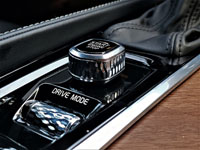
Amazingly these are the only electrified models in the mid-size, three-row luxury segment, but the XC90 T6’s efficiency still improves on Infiniti’s QX60 (10.9 combined), Audi’s Q7 (11.0 combined), Buick’s Enclave (11.9), Mercedes-Benz’s GLS (13.2), BMW’s X7 (10.8), Land Rover’s gasoline-powered Discovery (13.0), the 2020 Cadillac XT6 (11.5), and the 2020 Lincoln Aviator (11.6), with the only non-hybrid vehicle to beat it in this class being the just-noted Discovery when mated up to its turbo-diesel, a rare beast these days, yet capable of 10.4 L/100km combined city/highway.
I know for a fact the XC90 T6 is much quicker off the line than that Disco oil burner, however, not to mention most other entry-level models on this list (I used base models when comparing fuel economy numbers), while there’s absolutely no contest when comparing acceleration between hybrids. Truly, put your foot into the XC90 T6 AWD’s throttle and it’s hard to believe there’s a 2.0-litre four-cylinder mill pushing and pulling this big SUV forward, the little turbocharged, supercharged and direct-injected mill needing just 6.5 seconds to zip from standstill to 100 km/h. That makes the T6 1.4 seconds quicker to 100 km/h than the base T5 that crosses the same time line in 7.9 seconds, plus it’s less than a second (0.9) slower than the T8 that blasts the hefty Volvo from zero to 100km/h in a mere 5.6 seconds.
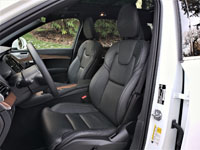
The T6 AWD doesn’t only look fast by the numbers, it feels even quicker when sprinting away from a stoplight or passing on the highway, while it also does a good job of hustling through corners. I’m not going to go so far as to say it can out-manoeuvre one of the aforementioned Germans on a tight, circuitous test track, but it’ll easily run rings around most of the others while delivering one of the smoothest, most compliant rides in its category, combined with one of the best driver’s seats in the business.
Before falling into the trap of listing out every single XC90 feature Volvo offers (click through to my 2018 XC90 R-Design review for this info, as I cover all trims and the 2019 model hasn’t notably changed), let’s just say Volvo’s mid-size SUV provides a good value proposition, especially when factoring in the superbly crafted interior I mentioned at the beginning of this review. Truly, the XC90 Inscription gets one of most luxuriously appointed cabins available south of a Bentley Bentayga, and to be honest, much of the Swedish utility’s switchgear is made from denser (and therefore higher quality) composites than the big British ute, whereas every one of the XC90’s digital displays is beyond compare (I should mention here that Bentley will update the Bentayga with much-needed new infotainment for 2020).
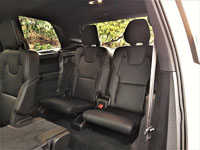
In front of the XC90’s driver is a completely digital gauge package capable of adding navigation mapping/route guidance to its centre multi-information section, where it can also house most of the infotainment system’s other functions, as well as the usual trip, fuel economy, etcetera info. Volvo’s award-winning Sensus infotainment system sits on the centre stack, its vertical, tablet-style touchscreen one of my favourites to use and its feature set replete with everything found in rival systems. Its overhead camera provides incredible detail, climate control interface some of the coolest temperature setting sliders around, and other functions right at the top of this segment, while its audio panel connected through to a sensational sounding $3,250 optional Bowers & Wilkins stereo featuring 1,400 watts of power and 19 speakers.
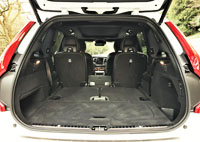
That upgraded stereo boasts a beautiful set of drilled aluminum speaker grilles on each door, plus a small circular tweeter atop the dash, but you’ll need to look back to the photo gallery for my 2018 XC90 tester to see what was missing, a stunning Orrefors crystal and polished metal shift knob. Remember I said that nothing below a Bentley comes close to this XC90? You really need to see and feel the gorgeous diamond-patterned metal edges of the rotating multi-function centre stack controller first-hand to appreciate how exquisitely crafted it is, or for that matter twist the similarly ornate lower console-mounted engine start/stop switch and cylinder-shaped scrolling drive mode selector, while the matte-finish hardwood found on the scrolling bin lids that surround the just-noted switchgear and shifter, plus the instrument panel and doors, is otherworldly. It’s difficult to argue against my Inscription trimmed tester’s contrast-stitched padded leather upholstery either, which can be found on nearly every other surface that’s not already covered in high-quality pliable composite materials. I’m not saying Volvo’s competitors don’t do a good job of detailing out their mid-size SUVs’ interiors, it’s just that the XC90 provides such a rare sense of occasion that few of its rivals can measure up.
Therefore, the next time a Volvo XC90 pulls up beside you, maybe nod with the same level of reverence shown to a Rolls-Royce Cullinan, Bentley Bentayga or Range Rover Autobiography, because it’s providing a similar level of opulent luxury while going much further to mitigate fossil fuel consumption and reduce emissions. That it can be had for a five-figure sum shows that its owners are pretty savvy too, which might be worth even greater respect.
Story credit: Trevor Hofmann
Photo credits: Karen Tuggay

